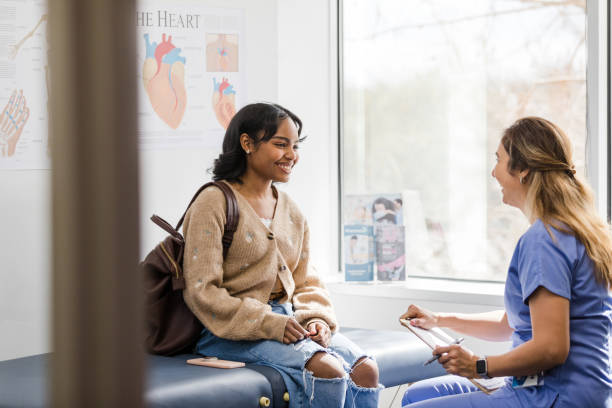As university students, finances can be tight and every penny counts. One common expense that many students may overlook is the cost of prescriptions. With the rising costs of education and living expenses, do university students have to pay for their prescriptions or are there options available to help alleviate this financial burden?
Access to healthcare is important for students, especially when juggling academics and extracurricular activities. However, the cost of medications can add up quickly, leaving students wondering if they can afford the necessary treatments. Understanding the options available for prescription coverage can help students make informed decisions about their healthcare.
In this article, we’ll show you all the various resources and programs that can help you cover the cost of prescriptions. By exploring these options and understanding how they work, you can better manage your healthcare expenses.
Table of contents
- What is a prescription?
- Do students pay for prescriptions in England?
- Who can get free prescriptions?
- What should you do if you can’t afford prescription charges?
- What healthcare services can students get for free?
- 10 Resources To Help You Save On Prescriptions
- 1. Work With Your Pharmacist
- 2. Get Familiar with NeedyMeds and RXAssist
- 3. Consider Generic Drugs
- 4. Buy in Bulk: Get a Prescription for a 90-Day Supply
- 5. Go Directly to the Drug Manufacturer for Discounts
- 6. Grab a Free Prescription Savings Card
- 7. Use an Online Mail-Order Pharmacy
- 8. Join a Paid Prescription Savings Program
- 9. Know Your Insurance Formulary
- 10. Work with a Hospital Social Worker
- Frequently Asked Questions
- Conclusion
- References
- Recommendations
What is a prescription?
You can take a prescription, which is a letter from your doctor to a drugstore to exchange for medication.
A prescription that a doctor must approve is typically given to you when you visit a GP or hospital. This prescription will tell you what drug and dosage you require.
For instance, you might need a prescription if you have serious allergies or require antibiotics or contraceptives.
Read also: Graduation in England: How Does It Work for International Students?
Do students pay for prescriptions in England?
All prescriptions are free in England if you are between the ages of 16 and 18 and enrolled in a comprehensive program of study.
This implies that you won’t be required to pay whether you’re in sixth grade, college, or your first year of university.
However, unless you are exempt, you must pay for most prescriptions once you turn 19 years old.
People with impairments, those receiving benefits, those with low incomes, and those who use all forms of contraception are all exempt.
Prescriptions are free in Wales, Scotland, and Northern Ireland; only in England will you be required to pay after you turn 19 years old.
Who can get free prescriptions?
The NHS states that to be eligible for free prescriptions, you must meet their requirements.
The standard under 16 and over 60 rule is one of the criteria. However, several laws may apply to college students.
Generally, anyone who would require more frequent examinations is qualified. For instance, you would be qualified if you are a pregnant student or have recently given birth.
They may also issue those with a persistent physical impairment or a specific medical condition a medical exemption certificate. If this applies to you, check your eligibility with your doctor, who will also provide you with the application form.
Of course, you must show your eligibility before receiving free medicines. You may find a comprehensive list of the data you must provide in your application on the NHSBSA website.
Read this: What Benefits Can Full-Time Students Claim? How to Claim Benefits as a Student
What should you do if you can’t afford prescription charges?
Numerous university students may also apply for the NHS Low Income Scheme. Instead of household income, your income determines your eligibility.
Anyone with funds, investments, or property valued at less than £16,000 may apply for this program.
You can get an HC2 certificate if you require total assistance, whereas an HC3 certificate can be obtained if you need partial assistance.
Your specific situation will determine how long your certificate is valid. It might not cover the entirety of your time in college.
Furthermore, you must pay for your medicines if you do not qualify for any of the aforementioned benefits.
Prescriptions will cost £9.35 per item in the UK. Most folks won’t find this to be too bad. It is significant to remember that this number may vary. The NHS website has more information about prescription fees.
You may be interested in obtaining a prepaid prescription certificate (PPC) if you have chronic medical conditions requiring frequent prescriptions.
Many PPC payment options are available that help you save money over time. On the NHS website, you can learn more about PPC.
You should set aside money in your budget for prescriptions and other healthcare costs because they can come at an unexpected cost.
What healthcare services can students get for free?
Making the appropriate healthcare plans is crucial if you are moving into college. This entails signing up with a general practitioner and a dentist near your university.
Since you’ll be at school most of the year, you’ll have easy access to medical care. This is crucial if you are currently suffering from a medical issue.
Because general practitioners work for the NHS, registration is free.
There are still many medications and services that you can acquire for free, even though you cannot get prescriptions for free. Your general practitioner provides some of these services or they are provided by other NHS clinics.
The NHS recommends contraception for students and offers free STI testing and treatments.
If you visit an STI clinic, you can get tested for STIs without paying anything. If you don’t consent, your doctor doesn’t even need to be notified.
Due to their proximity, university students are more susceptible to some ailments. Because of this, the NHS urges students to acquire necessary vaccinations before the first few weeks of class.
Meningococcal (Men) A, C, W, and Y infections are the 4 distinct forms of meningitis and septicemia that the MenACWY vaccine guards against. All first-time college students up to age 25 are qualified for this vaccination.
Read also: What Are Inset Days and Do Teaching Assistants Attend Inset Days?
10 Resources To Help You Save On Prescriptions
1. Work With Your Pharmacist
Look to your local pharmacist as a resource, advises Ramzi Yacoub, chief pharmacy officer of SingleCare, a free prescription drug savings program.
Yacoub advises you to stop by the drugstore and ask the pharmacist to review your list of medications. They’ll frequently be able to suggest a few cost-cutting ideas that you can subsequently share with your doctor.
One of these suggestions is to look into generic alternatives, transfer your long-term medications to 90-day supplies, or take advantage of savings programs offered by pharmaceutical companies.
2. Get Familiar with NeedyMeds and RXAssist
RXAssist is a database where you can look for specific medications and compare pharmacy pricing.
Your doctor can also use the website to look for local drug reps who can provide you with coupons or free samples of medications or to identify drug safety net organizations that help the uninsured get medication.
You must be uninsured, a citizen of the United States, and fulfill certain financial requirements to be eligible for most of RXAssist’s patient aid programs.
For instance, the income requirements for Pfizer’s prescription assistance programs vary depending on the medication but begin at “400% of the federal poverty level, adjusted for family size.” (For 2022 income, an individual’s 400% of the federal poverty line is $54,360.)
You can check this: Do University Students Get Free Eye Tests?
3. Consider Generic Drugs
According to the FDA, using generic medications instead of their name-brand equivalents can result in cost savings of between 30% and 80%.
Suppose you’re worried about the potency, active ingredient(s), or how a generic drug enters your system.
In that case, the FDA mandates that all generics fulfill strict standards compared to their brand-name counterparts.
Ensure your doctor checks the box, allowing the pharmacist to replace a generic medication version when writing a prescription.
You can expressly request a drug with a generic equivalent from your doctor.
4. Buy in Bulk: Get a Prescription for a 90-Day Supply
Purchasing additional prescription medication can be less expensive than purchasing a standard one-month supply.
Get your doctor to issue you a prescription for a 90-day supply to save the maximum money on various drugs, from mail-order pharmacies to in-store savings programs offered by pharmacies at Walmart or CVS.
For instance, you might pay $30 for three 30-day refills on a generic drug at CVS or $10 each. However, the identical prescription would only cost $15 if they prescribed it for 90 days.
A small selection of generic medications are available at Walmart for just $4 for a 30-day supply, and prescriptions for 90 days are only $10.
5. Go Directly to the Drug Manufacturer for Discounts
You may also perform a web search using the drug’s name and the phrase “savings program,” which will typically direct you to a website where you can find out about manufacturer discount programs and see if you qualify.
You might need to meet income or regional limitations to qualify for discounts.
Even though manufacturer-sponsored discounts sometimes result in sizable savings, you might still pay more than you would for a generic alternative.
Ask your pharmacists how much the manufacturer’s savings program will cost you compared to what you’ll pay with your insurance and copay if a generic version is available.
Also, check this: Do University Students Pay For The Dentist?
6. Grab a Free Prescription Savings Card
There is no shortage of free prescription savings programs available, allowing you to look up the medication you require online (including dosage and quantity) and check which local pharmacies charge the lowest prices for it.
However, you cannot use your insurance or a prescription savings card from one of these schemes.
If your insurance doesn’t cover the prescription or the price on the savings card is less than the amount you’d pay with insurance, for instance, you might decide to use that instead of your insurance.
7. Use an Online Mail-Order Pharmacy
Even though it’s unlikely that you’ll be able to utilize your insurance at these online pharmacies, you might find that paying out of pocket gets your medication at a lesser cost than you’d pay with insurance.
You won’t receive your medications immediately, which is a drawback of mail-order pharmacies.
If you require a drug the same day or the following day, you will probably need to fill your initial prescription locally before sending it to a mail-order pharmacy.
Don’t forget to ask your doctor for a 90-day supply if the cost savings are justified.
Related article: Does My TV Licence Cover Me at Another Address? A Student’s Guide to the TV Licence
8. Join a Paid Prescription Savings Program
Given the abundance of free prescription drug savings programs, you could question the need for paid services.
If you have a long-standing relationship with a neighborhood drug store like Walgreens, which has a $20 annual prescription savings club, it can come down to personal preference.
You might also already subscribe to a service like Amazon Prime, which just introduced a drug discount program for its users.
Anyone may join Amazon Prime, but if you’re only interested in the prescription discounts and won’t be using other Prime services like video or two-day shipping, you’ll need to consider the expensive $139 yearly membership fee.
Compare the savings from free programs before investing in paid ones.
9. Know Your Insurance Formulary
It can be difficult for you or your doctor to determine if your prescription plan will cover what because so many prescription medications are available.
The formulary (the list of medications covered by a prescription plan) for your insurance plan, however, might help you better prepare yourself to save.
You can download the app on your phone and look up the list of medications that are covered by your health insurance or prescription drug plan while still in the doctor’s office.
Before a prescription, you and your doctor can test other medications and discuss costs and coverage if a medication isn’t covered.
You can locate local and federal aid programs that can help with drug expenses and manufacturer savings plans for chronic ailments like cancer with the support of hospital-based social workers who are accustomed to working with patients from a wide range of socioeconomic backgrounds.
Read also: What Are Level 4 Qualifications Equivalent in Grades in the UK?
Frequently Asked Questions
Yes, the NHS in the UK offers free contraception. The contraceptive pill, IUDs, the contraceptive patch, and injections are all free, and all doctors’ and nurse’s appointments are private. If you decide to use contraception such as an implant or IUD, a nurse at your local GP office or sexual health clinic can fit and remove the device for free, even if you are under the age of 16.
Even though condoms aren’t free per se, you can typically receive them for free at a sexual health clinic or sign up for a free C card, which gives all people under 25 free condoms.
Antidepressants are not free in England; a prescription will cost you the customary £9.65. As a result, you will probably have to make monthly payments for the duration that you require the drug. Antidepressants are free when there are no prescription fees, such as in Wales, Scotland, and Northern Ireland.
In England, the prescription cost is currently £9.65 per item. A prepayment certificate that allows you to pay for three or twelve months in advance can be purchased if you need a repeat prescription. A 12-month pre-payment certificate costs £111.60, compared to £31.25 for a 3-month certificate.
The pill for birth control is free, yes. There are many various kinds of contraceptive pills, such as combination tablets and pills that contain progestin. Some of the brand names that are frequently prescribed are Microgynon, Rigevidon, Yasmin, and Cerazette.
Yes, the NHS offers free STI testing. You can order STI tests to your house and mail them for testing, or you can visit your local sexual health clinic to do a test for STIs requiring a urine sample or swab.
Unless you’re under 18, university students in England do not receive free prescriptions.
Regardless of whether you are attending university or not, you must pay for your medicines after you turn 19 years old.
You can obtain an exemption card allowing Scottish, Welsh, and Northern Irish students studying in England to continue receiving free medications abroad.
Conclusion
During your time in college, you can experience independence for the first time. You will be responsible for paying for most expenses if you live away from home in a residence hall.
You have many options to assist you in successfully transitioning into adulthood.
These consist of special offers and discounts. However, only some things are covered, as most university students are older than 18.
The expense of your medical treatment can be exceptionally high and consume a sizable portion of your student loan money.
References
Recommendations
- What Benefits Can Full-Time Students Claim? How to Claim Benefits as a Student
- Do University Students Get Free Eye Tests?
- Do University Students Pay For The Dentist?
- What Qualifications & Grades Do You Need to Become a Vet in 2024?
- 23 College Backpack Essentials: Must-Have Items For Students 2024
- GRE Exam Fees 2024 in India: Registration, Cancellation, Rescheduling Fees, and Score Reporting Fee
- Hardest Degree In The Guinness Book Of World Records




